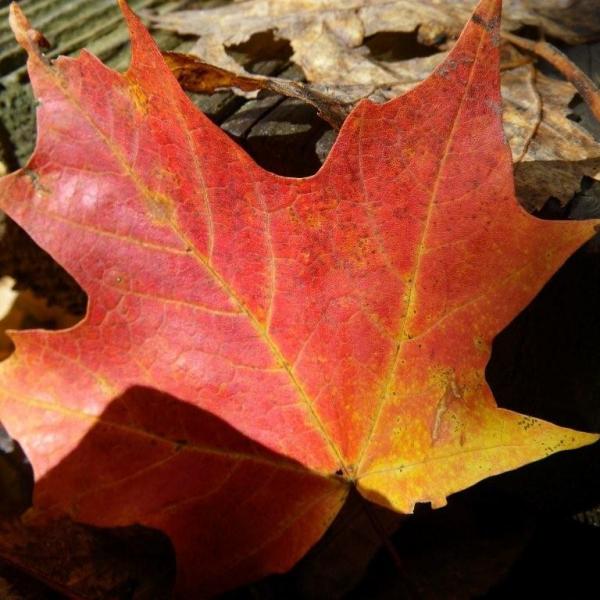
Thank you to Windham Regional Woodlands Association who originally printed this article in the fall 2016 issue of Woodlot Tips.
Barberry, buckthorn, honeysuckle, garlic mustard. These are just a few examples of invasive plants that you may find in your sugarbush. What is an invasive exotic plant? An invasive exotic plant is non-native to an ecosystem under consideration. It is considered invasive if its introduction causes or is likely to cause economic or environmental harm or harm to human health. Invasive exotics that become a problem in a sugarbush tend to share many characteristics. For example, they all produce abundant viable seeds, the seeds germinate, and the plants leaf out early in the spring and stay late into the fall, giving them a photosynthetic advantage over native plants. They have few pests or diseases, they can succeed in a wide variety of soil types and with varying amounts of available sunlight, and they can grow and reproduce so fast that they can form monocultures occupying any available growing space for native plant growth. Additionally, they can reproduce through seed and root sprouting, and they may produce chemicals that inhibit the growth of plants in close proximity.
Sugarmakers have learned from the past and used that knowledge, coupled with current practices and technology, to influence the future. The story of invasive exotic plant management is not much different. Most invasive exotic plants were introduced decades or more ago as ornamental plants. We didn’t understand what impact they would have on ecosystems and management of our forestlands until the problem was very large and past the point of being able to eradicate. We now know that early detection, rapid response, treatment, restoration, and monitoring are essential steps in retaining and growing sugarbushes for future generations. Simply ignoring invasive exotic plants in your sugarbush is a path to long-term failure. Not only do we want to make sure the next generation of maple trees can get established, but we want to ensure that current mature sugarbushes thrive as much as possible.
We have also observed some native plants that have morphed into being invasive. In areas of high deer browse, woody vegetation is very challenged in getting established. Heavy browsing of seedlings will often allow native ferns (predominantly hay-scented and New York fern, which deer are not fond of) to rapidly colonize the ground cover and inhibit any native woody tree seedlings from becoming established.
Treatment of these plants can vary based on personal philosophies and/or organic certification. There are various methods used to control the spread of invasive exotic plants. The most common are chemical controls with specific herbicides and application techniques; manual control consisting of pulling, covering, and sometimes burning; and mechanical control that can involve pulling, shredding, and mulching with the use of equipment.
Invasive exotic plants are in all corners of Vermont and unfortunately are well established throughout Windham County. As land managers, sugarmakers, and good land stewards, we all have a responsibility to work together to control invasive exotic plants. There is no one piece of technology that is going to solve the problem. It will take a type of cultural shift to recognize that these plants must be controlled if current and future generations are to continue to enjoy sugaring as we have in the past. The days of an old decadent maple falling in the woods and making room for the flush of new young maple saplings are becoming a rarity. Detecting invasives before they can multiply and get a stranglehold on your woods is essential. Doing something about it early will cost far less and have much more immediate impact than if delayed. Treating the plants using a systematic approach and a regular monitoring schedule will pay off in the long run. Finally, monitoring your woodlot and sugarbush for regrowth or new growth of invasives will make the task of controlling them far less daunting and much more rewarding. In some cases, after invasives are controlled, planting of sugar maple seedlings may be needed.
About the Windham Regional Woodlands Association:
WRWA is a non-profit association of woodland owners and managers, members of the wood products industry, and other interested parties in the Windham County Region who advocate both sustainable management practices and the enjoyment of forests and their ecosystems. In support of these ends, the WOA offers educational opportunities for all age groups. Areas of interest include: biodiversity; clean air and water; cultural and historic resources; fair and equitable taxation of woodland; forest products; recreation; scenic beauty; and wildlife habitat. We recognize that these concepts are continually evolving and therefore will strive to consider the most current thinking and values regarding them. http://www.woodlandownersassociation.org/
Article Credit: Sam Schneski and Bill Guenther, Windham County Foresters